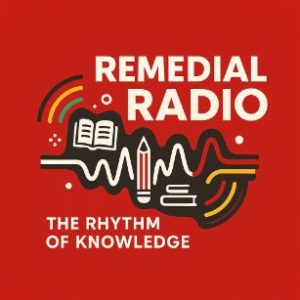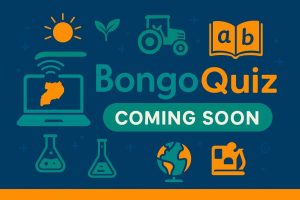Contents
- 1 Introduction
- 2 Technological Solutions for Learning Disabilities
- 2.0.1 1. Assistive Reading Tools
- 2.0.2 2. Visual Learning Aids
- 2.0.3 3. Communication Enhancement Tools
- 2.0.4 4. Behavioral and Focus Aids
- 2.0.5 5. Online and Blended Learning Platforms
- 2.0.6 6. Customized Learning Management Systems (LMS)
- 2.0.7 7. Virtual Reality (VR) and Augmented Reality (AR)
- 2.0.8 8. Adaptive Testing Tools
- 2.0.9 9. Mobile Learning Applications
- 2.0.10 10. Collaborative Platforms for Peer Support
- 2.1 11. online radio
- 3 Conclusion: Embracing Technology for Inclusive Education in Uganda
Introduction
Technology has transformed countless aspects of our lives, and education is no exception. In Uganda, where resources in special education might be limited, technology offers unique opportunities to provide tailored educational experiences to students with learning disabilities. This blog post delves into how various technological tools and software can aid learning for children with disabilities, ensuring they have equal opportunities to succeed in their educational pursuits.
The Challenge of Special Needs Education in Uganda
Educating children with learning disabilities presents a significant challenge in many parts of Uganda. Traditional educational methods often do not cater to the diverse needs of these students, who may require more individualized approaches to learn effectively. The lack of specialized resources and trained staff in many schools further exacerbates the issue. However, with the advent of technology, there are now more possibilities to bridge these gaps.
Technological Solutions for Learning Disabilities
1. Assistive Reading Tools
Many students with dyslexia or other reading disorders struggle with traditional text-based learning. Assistive technology tools like text-to-speech software can help by reading texts aloud, allowing students to process information audibly. Applications such as JAWS, NVDA, voiceover, NaturalReader or Voice Dream Reader are examples that could be utilized in Ugandan classrooms to support these students.
2. Visual Learning Aids
For students who are visual learners, especially those on the autism spectrum, visual learning aids can be highly beneficial. Tools like interactive whiteboards and projectors can display graphical representations of concepts that help these students grasp complex ideas more easily. Additionally, apps that provide visual storytelling or mind mapping like Kidspiration or Microsoft OneNote can enhance learning by making information more accessible and engaging.
3. Communication Enhancement Tools
Non-verbal students or those with severe speech disabilities can benefit from Augmented and Alternative Communication (AAC) devices and apps. Tools like Proloquo2Go and GoTalk NOW facilitate communication by allowing students to use symbols and text to articulate their thoughts and needs, fostering a better learning environment and helping teachers understand their students’ perspectives.
4. Behavioral and Focus Aids
Technology can also assist in managing behavioral challenges and improving focus among students with ADHD and other attention-related disorders. Apps that use gamification to teach self-regulation and focus, like Brili and Flippity, can be effective. Additionally, wearables that monitor and predict behavior patterns could provide feedback and cues to help students remain focused.
5. Online and Blended Learning Platforms
Online learning platforms that offer customizable learning experiences are ideal for students with learning disabilities. These platforms can adapt the pace, level of difficulty, and types of assessment based on the student’s unique needs. Ugandan schools can leverage platforms like our own Remedial corner, which provides curriculum resources that cater to a broad range of abilities and learning styles.
6. Customized Learning Management Systems (LMS)
For schools equipped with IT infrastructure, implementing a Learning Management System (LMS) that can be customized for students with learning disabilities is a significant advancement. These systems can be tailored with unique features such as adjustable text sizes, color contrast settings, and simple navigation paths which cater specifically to the needs of students with visual impairments or cognitive challenges.
7. Virtual Reality (VR) and Augmented Reality (AR)
VR and AR are on the cutting edge of educational technologies, providing immersive learning experiences that can be highly beneficial for students with disabilities. VR can transport these students into environments they might otherwise find inaccessible, offering hands-on experience in a controlled, safe setting. AR can overlay helpful information onto the real world, aiding students with contextual learning and engagement.
8. Adaptive Testing Tools
Adaptive testing technology can adjust the difficulty of questions based on the student’s responses, ensuring that students with learning disabilities are not overwhelmed and receive tests tailored to their ability level. This approach promotes a better understanding of material at the student’s pace and avoids discouragement that can come from facing unmanageable challenges.
9. Mobile Learning Applications
Mobile technology offers flexible learning opportunities for students with disabilities. Apps specifically designed for children with learning difficulties can strengthen skills through games and interactive challenges that can be accessed from anywhere. This method supports continuous learning outside the traditional classroom setting, which can be particularly useful for students needing more repetition to grasp concepts.
10. Collaborative Platforms for Peer Support
Technology can facilitate peer support networks through forums, group chats, and collaborative project tools. These platforms allow students with learning disabilities to connect with others facing similar challenges, share strategies, and support each other’s learning journeys. Peer support is crucial in building confidence and social skills, which are often areas of difficulty for students with special needs.
11. online radio
Gone are the days when radios were for only music and news. In the 21st century, students and teachers use undertake their lessons on online radios. These radios provide a good service for remedial lessons to supplement on the content obtained from class. A case in point is Radio remedial Uganda, which provides a rich blend of curriculum specific content aside from the urban bits. With the slogan, the rhythm of knowledge, this borderless radio promotes edutainment free to all.
Conclusion: Embracing Technology for Inclusive Education in Uganda
The potential of technology to transform the educational experiences of students with learning disabilities in Uganda is vast. By incorporating tech solutions into the curriculum, schools can create more inclusive environments that cater to the needs of all students. However, the successful implementation of these technologies requires adequate training for educators, sustainable funding, and ongoing support to ensure that these tools are used effectively and continue to evolve with educational needs.
Technology is not just a tool but a bridge to opportunity for students with learning disabilities. By investing in and prioritizing these technological solutions, Uganda can take significant strides towards an inclusive educational system that respects and enhances the learning experiences of every child.
FAQ Section
Q1: Are these technologies readily available in Ugandan schools?
A1: Availability varies significantly between urban and rural areas. Efforts are being made to increase access, but more investment is needed to ensure widespread distribution.
Q2: How can teachers be trained to use these technologies effectively?
A2: Teacher training programs need to include modules on the use of educational technology, supported by continuous professional development and resources.
Q3: What is the role of parents in using technology to help children with disabilities?
A3: Parents play a crucial role in reinforcing the use of technological aids at home. Workshops and training for parents can enhance their ability to support their children’s learning.
Q4: How cost-effective are these technological solutions for average Ugandan families?
A4: While some solutions can be expensive, there are also many low-cost or free apps and tools available. Funding and subsidies from the government or NGOs can also help alleviate these costs.
Q5: What is the future of technology in special needs education in Uganda?
A5: The future looks promising as more stakeholders recognize the benefits of technology in education. Continued innovation and investment will likely increase the use of technology in special needs education across Uganda.


Leave a Reply